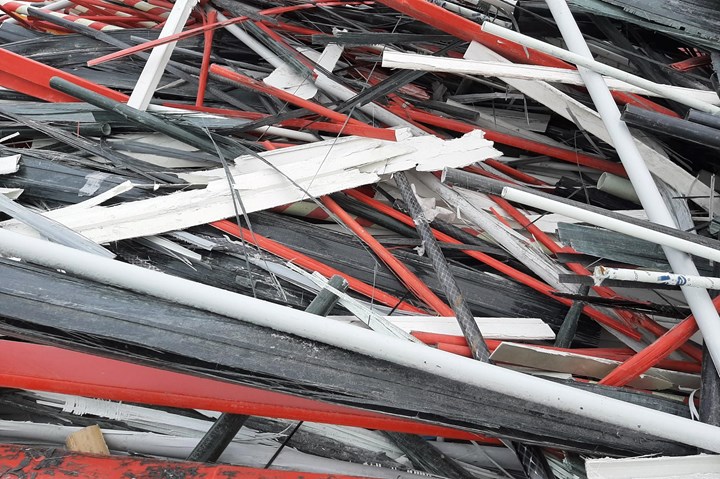Kuusakoski announces plans for composite recycling plant in Finland
New composite shredding and treatment plant in southern Finland will enable the co-processing of composite waste for cement production.
Finnish recycling company Kuusakoski (Espoo) reveals plans to build a new composite shredding and treatment plant at its Hyvinkää site in southern Finland. The new composite treatment plant will shred composites safely and effectively, according to the company.
The €4 million investment, financed by Business Finland from RRF (Recovery and Resilience Facility) funding, includes the renovation of a building that currently exists at the Kuusakoski Hyvinkää site, as well as the construction of a new processing line. It reflects Kuusakosk’s multi-year green investment program.
“Our investment brings the circular economy solution piloted in Germany to Finland. With it, we can provide the best industrial scale recycling process for composite materials locally,” Mikko Kuusilehto, president and CEO of Kuusakoski, contends. “The demand for a recycling solution for composites is rising already, as the amount of composite waste will increase: Wind turbines, airplanes, boats and other vehicles contain considerable and increasing amounts of composites.”
The composite waste is supplied as a raw material by Kuusakoski to the cement industry. The shredded composite material is co-processed in cement production, where it can be efficiently used without residual ash.
Composite material contains fibers and polymers. In this co-processing, the fibers are substituting limestone and the polymers are substituting fossil fuel, ultimately lowering C02 emissions.
Kuusilehto highlights a common misconception about the shredded composite material that this new plant will produce: “It is good to understand that the shredded composite materials are not mixed with concrete. They are used in the production of clinker — the pre-product that is used to prepare cement — and no trace of fibers is left in the cement that is then used for preparing concrete.”
The new facility will improve the efficiency of the process that was piloted in the KiMuRa project. It will consist of two shredders, several covered conveyors, a magnet and a dust control system. The dust control system is especially important, as the processing of composites creates large amounts of fine, harmful dust.
The processing line is planned to be in full production by the end of 2025.
For similar composite recycling processing, see:
- Decommissioned wind turbine blades used for cement co-processing
- GE announces U.S. blade recycling contract with Veolia
Related Content
-
ASCEND program completion: Transforming the U.K.'s high-rate composites manufacturing capability
GKN Aerospace, McLaren Automotive and U.K. partners chart the final chapter of the 4-year, £39.6 million ASCEND program, which accomplished significant progress in high-rate production, Industry 4.0 and sustainable composites manufacturing.
-
All-recycled, needle-punched nonwoven CFRP slashes carbon footprint of Formula 2 seat
Dallara and Tenowo collaborate to produce a race-ready Formula 2 seat using recycled carbon fiber, reducing CO2 emissions by 97.5% compared to virgin materials.
-
Watch: A practical view of sustainability in composites product development
Markus Beer of Forward Engineering addresses definitions of sustainability, how to approach sustainability goals, the role of life cycle analysis (LCA) and social, environmental and governmental driving forces. Watch his “CW Tech Days: Sustainability” presentation.

















